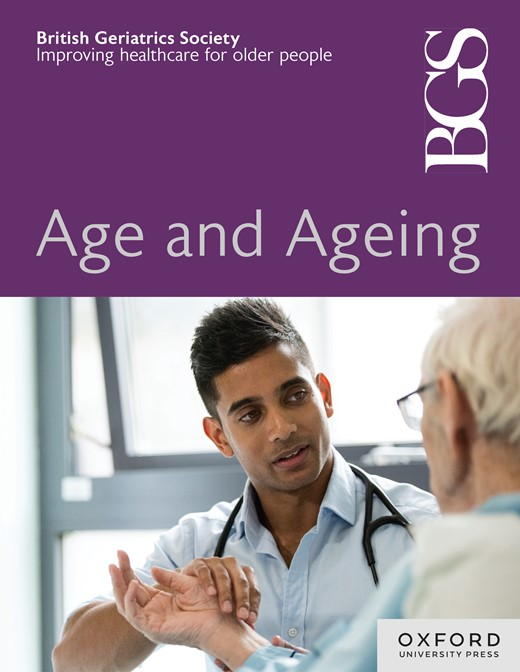以医院为基础的痴呆症特别护理单位降低了因行为而再次入院的比率,同时降低了整个医疗病房的跌倒和职业暴力发生率
IF 6
2区 医学
Q1 GERIATRICS & GERONTOLOGY
引用次数: 0
摘要
背景:以医院为基础的痴呆症特殊护理单位(SCU)有望成为一种有效的护理模式。然而,有限的研究描述了整个医院的好处。目的探讨急性重症监护室患者水平和医院服务水平的预后。设计scu患者数据和医院服务单位事件报告数据的前后分析。背景:参与者来自4个医疗病房的2年SCU患者入院和4年医院事件报告(SCU前后2年)。方法由SCU专科护士对SCU患者入院和出院时行为严重程度进行前瞻性测量。一年期住院率、住院时间、诊断和患者人口统计资料回顾性地从医疗记录中获得。医院服务单位的数据包括4个医疗病房4年来每月跌倒、压伤和职业暴力事件报告率。计数数据的分析使用泊松和负二项回归模型。结果121例SCU入院患者共107例。SCU LoS的中位数为23天(四分位数间距[IQR], 13-50),行为严重程度稳定需要11天(IQR 6-12)。出院障碍与替代决策和护理设施的可用性有关。SCU出院后,“所有原因”的年住院率下降了68%(事故率比[IRR], 0.32, 95% CI, 0.23-0.43),行为相关住院率下降了83% (IRR 0.17, 95% CI, 0.11-0.28)。对于医院服务单位的结果,实施SCU后每月跌倒率下降了21% (IRR 0.79, 95% CI 0.64-0.99), OV下降了26% (IRR 0.74, 95% CI 0.59-0.94)。结论:以医院为基础的SCU通过减少SCU患者再入院率来减少医院卫生服务需求,并与整个医院病房的跌倒和OV率降低相关。本文章由计算机程序翻译,如有差异,请以英文原文为准。
A hospital-based special care unit for dementia decreased hospital readmission rates for behaviour while reducing rates of falls and occupational violence across medical wards
Background Hospital-based Special Care Units (SCU) for dementia show promise as effective models of care. However, limited research describes hospital-wide benefits. Objective To describe patient-level outcomes and hospital service-level outcomes of a SCU. Design Pre-post analyses of SCU-patient data and hospital service-unit incident report data. Setting, participants 2-years of SCU-patient admissions and 4-years of hospital incident-reports from four medical wards (2-years pre-post SCU). Methods Admission and discharge severity of SCU-patients’ behaviour was prospectively measured by specialist SCU nurses. One-year hospitalisation rates, length-of-stay, diagnosis and patient demographics were retrospectively obtained from medical records. Hospital service-unit data included 4 years of monthly incident report rates for falls, pressure injury and occupational violence (OV) across four medical wards. Analysis of count data used Poisson and Negative Binomial Regression models. Results 121 SCU admissions involved 107 unique patients. Median SCU LoS was 23 days (interquartile range [IQR], 13–50), and stabilisation of behaviour severity took 11 days (IQR 6–12). Barriers to discharge related to substitute decision-making and care facility availability. After SCU discharge, yearly hospitalisation rates for ‘all-reasons’ decreased by 68% (Incident Rate Ratio [IRR], 0.32, 95% CI, 0.23–0.43), and 83% for behaviour-related admissions (IRR 0.17, 95% CI, 0.11–0.28). For hospital service-unit outcomes, falls-per-month decreased by 21% (IRR 0.79, 95% CI 0.64–0.99) after SCU implementation and OV by 26% (IRR, 0.74, 95% CI 0.59–0.94). Conclusions A hospital-based SCU reduced hospital health service demand through decreased SCU-patient readmissions and was associated with decreased falls and OV rates across hospital medical wards.
求助全文
通过发布文献求助,成功后即可免费获取论文全文。
去求助
来源期刊

Age and ageing
医学-老年医学
CiteScore
9.20
自引率
6.00%
发文量
796
审稿时长
4-8 weeks
期刊介绍:
Age and Ageing is an international journal publishing refereed original articles and commissioned reviews on geriatric medicine and gerontology. Its range includes research on ageing and clinical, epidemiological, and psychological aspects of later life.
 求助内容:
求助内容: 应助结果提醒方式:
应助结果提醒方式:


